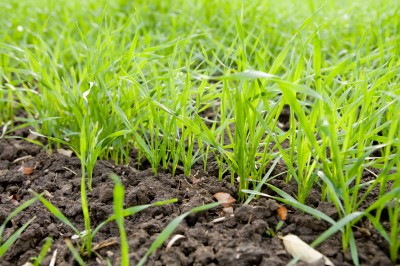Young Barley - Hordeum vulgare

Common Names: Young Barley, Barley Grass, Green Barley, Hordeum vulgare, Common Barley, barley seedlings, barley sprouts, barley leaf, barley plant, latin: Hordeum vulgare, wheatgrass alternative
Latin Name: Hordeum vulgare
Origin: Africa, Asia, Europe, South America, North America
Short Introduction
In the Czech Republic, barley is the second most significant cultivated crop, enjoying ideal conditions for growth. However, different barley varieties can be extremely diverse, with varying demands for cultivation. Some types are grown near the polar circle, and barley can also be cultivated in mountainous regions.
Detailed Description
A natural shield against lifestyle diseases, provider of energy and lightness.
Botanical Information
Barley belongs to the grass family and is a self-pollinating plant. Wild forms once covered the grassy regions throughout western Asia and northeast Africa. Barley shares a very similar morphology with wheat, which is a more distantly related grain. Its inflorescence is a spike, and the fruit is a structure called a caryopsis.
Origin and Distribution
The origin of barley is archaeologically traced to Europe, Asia, and Africa dating back to prehistoric times. It likely reached Europe with migrating peoples from southwestern regions. Today, barley is mainly found in the Northern Hemisphere, but is also cultivated in South America and southern Africa where water is sufficient. Barley is one of the first domesticated and intentionally cultivated crops in human history. Wild varieties now stretch from North Africa through Crete to Central Asia. Archaeological findings suggest it was already farmed around 8000 BC in present-day Syria. Its spread must have been rapid, considering that by around 4000 BC barley was being cultivated in what is now Finland. In ancient Egypt, barley was purposely grown for brewing beer and baking bread; it was thus recognized early as a key plant, the success of which was linked to bountiful harvests and a prosperous year.
Usage / Dosage
The barley genus has a wide range of uses in food production (it is one of the oldest crops), cosmetics, and folk medicine. The importance of the species Hordeum vulgare, or common barley, is seen in its role in making cereals, animal feed, and in the production of beer and whisky.
Due to its enzymatic activity (for example, superoxide dismutase) and the presence of antioxidant compounds (Vitamins A and E), barley is thought to help neutralize oxidative radicals. This is known as the antioxidant effect. Other compounds in barley influence core physiological functions of the body, while others help neutralize acids in the body that can negatively affect homeostasis. Certain substances block the absorption of toxic compounds from food and facilitate the inactivation of harmful substances already absorbed, binding to metal ions and compounds responsible for toxicity.
Young barley has similar health uses to young wheatgrass. Both plants contain comparable active ingredients, though their composition and proportions differ, especially regarding taste, making it important for individuals to discover personal preference. In terms of effects, barley is suitable for stimulating metabolism, making it an excellent addition to weight-loss diets. Thanks to its high energy content, it is especially well-suited for people experiencing chronic fatigue and depressive states—providing a true energy boost.
Active Compounds
The main nutritional value in barley comes from polysaccharides (starch). Barley further contains antioxidant compounds (Vitamins B and E). Young barley, harvested during its peak vegetative growth when the plant is richest in phytonutrients, offers an even greater variety of beneficial substances. Young barley is especially high in Vitamins B and E and additionally contains Vitamins A and K, as well as beta-carotene and a wealth of minerals and trace elements. It supplies niacin, biotin, folic acid, a broad spectrum of amino acids including alanine, arginine, methionine, phenylalanine, serine, glycine, threonine, proline, histidine, tyrosine, valine, lysine, isoleucine, leucine, as well as glutamic and aspartic acids. Among the minerals are magnesium, potassium, zinc, calcium, and silicon. Chlorophyll and numerous enzymes are present in high quantities.
Traditional Dosage
Green barley is ideally taken about 30 minutes before meals or at least 2 hours after eating. The dosage depends on individual needs such as activity level, workload, lifestyle, and health status, typically 1–3 times per day. For powdered forms, one coffee spoon is enough per dose; sprouted forms may use a few spoons per serving. As a vegetable or grain, barley cannot be overdosed, and there are no warnings restricting its use by children, pregnant women, or the elderly. However, it is always wise to consult a physician when adding barley supplements to your diet.

